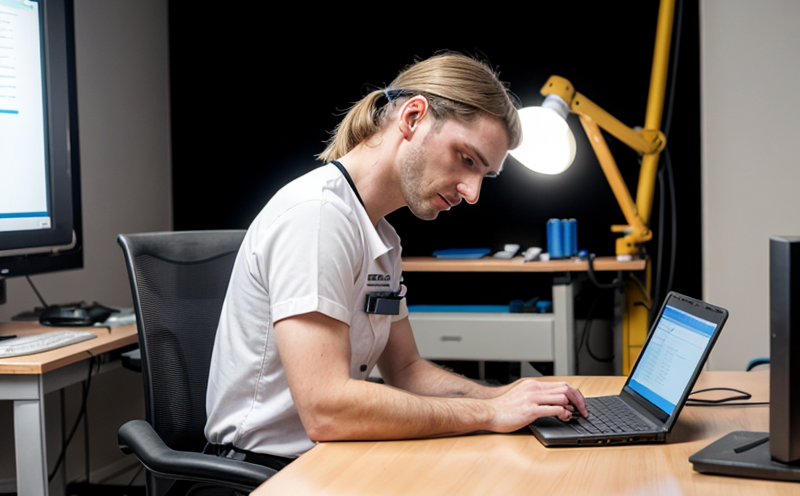NASA-STD-3001 Human Systems Integration Ergonomic Testing
The NASA Standard 3001 (NASA-STD-3001) provides a comprehensive framework for the design, development, and evaluation of human systems in aerospace applications. This standard focuses on ensuring that human factors and ergonomics are integrated into all aspects of spacecraft and aircraft design to enhance safety, efficiency, and usability. The primary objective is to ensure that the physical environment, control interfaces, displays, and other human-machine interaction elements meet or exceed ergonomic requirements.
The standard covers a wide range of topics including but not limited to: anthropometry (measurement of human body dimensions), biomechanics (study of mechanical laws governing living organisms), psychophysics (branch of psychology that studies the relationship between physical stimuli and sensation, perception, and behavior), cognitive ergonomics (application of ergonomic theory and principles to the design of interactive systems for human use), and usability engineering.
The testing process outlined in NASA-STD-3001 involves a series of steps designed to ensure compliance with both internal agency requirements as well as international standards such as ISO, ASTM, EN, and IEC. These include:
- Identification of human factors that could impact system performance
- Development of ergonomic specifications based on these factors
- Testing under simulated operational conditions to validate the design
- Data collection and analysis to assess compliance with standards
- Feedback loop for iterative improvement
The testing process is highly detailed and involves a combination of physical, physiological, and psychological assessments. Instruments used may include but are not limited to motion capture systems, force sensors, eye-tracking devices, and cognitive task simulators. The goal is to ensure that the final product meets stringent requirements for human comfort, performance, and safety.
The standard emphasizes the importance of early integration of human factors into the design process. By doing so, potential issues can be identified and addressed before they become critical problems during later phases of development or operation. This approach not only saves time and resources but also enhances overall product quality and reliability.
Compliance with NASA-STD-3001 is crucial for any organization involved in the design and manufacturing of aerospace products. Failure to meet these standards can lead to significant delays, increased costs, and even safety risks. Our laboratory offers comprehensive testing services that adhere strictly to this standard ensuring accurate and reliable results.
Our team of experts has extensive experience working with NASA-STD-3001 and understands the unique challenges faced by aerospace manufacturers. We provide tailored solutions aimed at helping our clients achieve compliance while also enhancing their products' overall performance.
Applied Standards
NASA-STD-3001 is one of several key documents that guide the design and development process within NASA's space exploration programs. It aligns closely with other industry standards such as ISO 9241, which deals specifically with human-computer interaction (HCI), and ANSI/AIHA Z39.57-1996, which focuses on visual display terminal ergonomics.
Compliance with these standards ensures that our testing meets international best practices ensuring consistency across different projects and industries. Additionally, adherence to such rigorous guidelines helps us stay ahead of emerging trends in human factors engineering.
Customer Impact and Satisfaction
The impact of NASA-STD-3001 testing extends far beyond mere compliance; it directly contributes to enhancing product safety, reducing errors, improving user satisfaction, and fostering innovation within the industry. Satisfied customers report significant benefits including:
- Improved product quality leading to higher customer satisfaction
- Reduced risk of human error during critical operations
- Enhanced reputation among peers due to adherence to stringent standards
- Cost savings through prevention of costly rework and recalls
Client testimonials highlight the value placed on our services, with many noting improved ergonomics in their products which translates into better user experiences. These improvements are especially evident when it comes to complex systems where human interaction plays a crucial role.
Use Cases and Application Examples
Here are some specific examples of how our NASA-STD-3001 testing services have been applied in real-world scenarios:
- Aircraft Cockpit Design: Ensuring that pilots can access controls quickly and easily while maintaining situational awareness.
- Crew Quarters Layouts: Optimizing space utilization for comfort and functionality during long-duration missions.
- Control Panel Arrangements: Creating intuitive interfaces that minimize errors in stressful environments like spacewalks or emergency landings.
- Command Center Operations: Designing efficient workflows to support decision-making processes under high pressure conditions.
In each case, our testing ensures that the final design not only meets but exceeds ergonomic expectations set forth by NASA-STD-3001. This commitment to excellence has earned us a reputation as leaders in this field.





